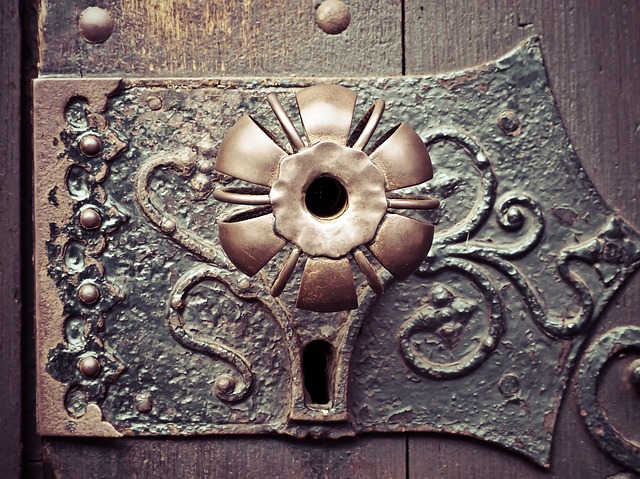Before replacing your front door, remove the old one to address potential damage, inefficiencies, and enhance curb appeal. Prioritize safety and responsibly dispose or recycle materials like wood and metal. Explore recycling options for eco-friendly practices, focusing on door types, security features, budgeting, local regulations, and old door disposal.
The old front door, a fixture that once welcomed you home, now stands in the way of your desired aesthetic and functionality. Understanding why removing it is crucial before initiating a front door replacement project is the first step towards a seamless transition. This article guides you through the process, from recognizing the necessity of removal to ensuring safe handling and exploring eco-friendly disposal and recycling options. Learn how to efficiently plan your front door replacement, making it a stress-free, sustainable experience.
Understanding Why Door Removal Is Necessary Before Front Door Replacement
Before diving into a front door replacement, it’s crucial to grasp why removing old doors is a necessary step in the process. Old doors can be warped, damaged, or even rot from years of exposure to weather and elements, compromising both the aesthetics and functionality of your home. Moreover, outdated doors may not meet current energy efficiency standards, contributing to higher heating and cooling costs. By removing these old doors, you create a clean slate for a new front door replacement that can enhance curb appeal, improve security, and reduce utility expenses.
During this removal process, proper disposal or recycling becomes paramount. Wood from old doors can be recycled into various products, while metal components may be salvaged for re-use in other construction projects. Understanding the environmental impact of your actions underscores responsible home improvement practices. It’s a step towards creating a more sustainable living space, ensuring that materials are not wasted but rather reused or recycled, contributing to a greener future.
Safety Precautions When Handling Old Doors
When tackling the removal of old doors, safety should be your top priority, especially if they’re heavy or made from certain materials. Always wear appropriate protective gear, including gloves and safety glasses, to prevent any accidents or injuries during the disposal process. If the door is particularly large or bulky, consider seeking assistance from a friend or professional to ensure safe handling and transportation.
Additionally, be mindful of the potential hazards associated with older doors, especially those constructed before modern environmental regulations were in place. Doors made from certain materials like lead-based paint or treated wood can pose health risks if not handled correctly. In such cases, it’s best to consult local waste management guidelines for proper disposal methods, ensuring that you contribute to a greener environment by responsibly recycling these materials, particularly when considering a front door replacement.
Correct Disposal Methods for Different Types of Doors
When it comes to old doors, proper disposal is key to minimizing environmental impact and maximizing resource recovery. For example, wood doors can be recycled or reused in various ways. Check local recycling centers as many accept wooden items. If the door is still in good condition, consider donating it to charities or individuals who might need a front door replacement. Metal doors, commonly found in older homes, are also recyclable. Strip off any hardware and take them to designated metal recycling sites.
For vinyl doors, which are popular for both front door replacements and interior applications, proper disposal is equally important. Unlike wood and metal, vinyl cannot be recycled through standard channels. Instead, contact local waste management services for guidance on safe disposal methods. In some areas, specialized facilities exist that can process non-recyclable materials like vinyl, ensuring they don’t end up in landfills.
Exploring Recycling Options for Old Doors
When considering a front door replacement, exploring recycling options for old doors is an eco-friendly approach worth investigating. Many materials used in door construction can be repurposed or recycled, reducing waste and minimizing environmental impact. Wood from old doors, for instance, can often be salvaged and transformed into new products like furniture or flooring.
Metal components, commonly found in door frames and hardware, are highly recyclable. Local recycling centers typically accept metal doors and their parts, allowing these materials to be melted down and used in various manufacturing processes. This sustainable practice not only conserves natural resources but also contributes to a circular economy by giving new life to old doors.
Tips for Efficiently Planning Your Front Door Replacement Project
When planning a front door replacement, start by assessing your current door’s condition and taking measurements to ensure a perfect fit for your new one. Research different types of doors—wooden, fiberglass, steel—and choose one that aligns with your home’s style and energy-efficiency goals. Consider the entry’s function: Is it a main entrance or a side door? This will impact the door’s security features and material.
Create a budget for your project by comparing prices from various suppliers and contractors. Check local building codes and regulations to ensure your desired front door complies with safety standards. Additionally, plan for the disposal or recycling of the old door. Many hardware stores offer recycling services, ensuring responsible management of your old door materials.
When replacing your front door, proper removal and disposal of old doors is a key step in any successful project. By understanding the necessity of door removal, implementing safety precautions, and exploring recycling options, you not only contribute to environmental sustainability but also ensure a smooth and efficient front door replacement process. Remember to plan ahead, follow correct disposal methods, and consider recycling opportunities for a greener approach to home improvement.
